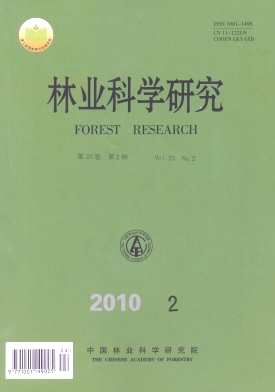|
[1]
|
程金花,张洪江,史玉虎, 等. 三峡库区几种林下枯落物的水文作用[J]. 北京林业大学学报,2003,25(2): 8-13
|
|
[2] Richard L,Granillo A B. Soil protection by natural vegetation on clearcut forest land in Arkansas[J]. Journal of Soil and Water Conservation,1985,40(4): 379-382 |
|
[3] 朱金兆,刘建军,朱清科,等. 森林凋落物层水文生态功能研究[J].北京林业大学学报, 2002, 26(5/6): 30-34
|
|
[4] Putuhena W M,Cordery I.. Estimation of interception capacity of the forest floor [J]. Journal of Hydrology,1996, 180: 283-299 |
|
[5] 张洪江,程金花, 余新晓, 等.贡嘎山冷杉纯林枯落物储量及其持水特性[J]. 林业科学,2003,39(5): 147-151
|
|
[6] 申卫军,彭少麟,周国逸,等. 马占相思(Acacia mangium)与湿地松(Pinus elliotii)人工林枯落物层的水文生态功能[J]. 生态学报,2001,21(5): 846-850
|
|
[7] 叶 吉,郝占庆,姜 萍. 长白山暗针叶林苔藓枯落物层的降雨截留过程[J]. 生态学报,2004,24(12):2059-2062
|
|
[8] 王佑民. 中国林地枯落物持水保土作用研究概况[J]. 水土保持学报, 2000,14 (4): 110-115
|
|
[9] 丁 军,王兆骞,陈 欣,等. 南方红壤丘陵区人工林地水文效应研究[J]. 水土保持学报, 2003,17(1): 141-144
|
|
[10]
|
[10] 张远东,刘世荣,马姜明,等. 川西亚高山桦木林的林地水文效应[J]. 生态学报,2005,25(11): 2939-2946
|
|
[11]
|
[11] 杨继松,刘景双,于君宝,等. 三江平原沼泽湿地枯落物分解及其营养动态[J]. 生态学报, 2006,26(5): 1297-1302
|
|
[12]
|
[12] 高志勤,傅懋毅. 毛竹林等不同森林类型枯落物水文特性的研究[J]. 林业科学研究,2005,18(3): 274-279
|
|
[13]
|
[13] 王彦辉,刘永敏. 江西省大岗山毛竹林水文效应研究[J]. 林业科学研究,1993,6(4): 373-379
|
|
[14]
|
[14] 龚 伟,胡庭兴,王景燕. 川南天然常绿阔叶林人工更新后枯落物层持水特性研究[J]. 水土保持学报, 2006,20(3):51-55
|
|
[15]
|
[15] 周晓峰.帽儿山、凉水森林水分循环的研究[M]//周晓峰.中国森林生态系统定位研究. 哈尔滨:东北林业大学出版社,1994:213-222
|
|
[16]
|
[16] 刘月廉,吕庆芳,潘颂民,等. 桉树林分枯落物分解微生物的种类和数量[J]. 南京林业大学学报,2006,30(1):75-78
|
|
[17]
|
[17] 武海涛,吕宪国,杨 青,等. 土壤动物主要生态特征与生态功能研究进展[J]. 土壤学报,2006,43(2): 314-323
|
|
[18]
|
[18] 林 波,刘 庆,吴 彦,等. 川西亚高山人工针叶林枯枝落叶及苔藓层的持水性能[J]. 应用与环境生物学报,2002, 8(3):234-238
|
|
[19]
|
[19] 肖复明,范少辉,汪思龙,等. 毛竹(Phyllostachys pubescens)、杉木(Cunninghamia lanceolata)人工林生态系统碳贮量及其分配特征[J]. 生态学报,2007,27(7): 2794-2801
|
|
[20]
|
[20] 肖慈英,阮宏华,屠六邦. 宁镇山区不同森林土壤生物学特性的研究[J]. 应用生态学报,2002,13(9): 1077-1081
|
|
[21]
|
[21] 王云琦,王玉杰,张洪江,等. 重庆缙云山几种典型植被枯落物水文特性研究[J]. 水土保持学报,2004,18(3): 41-44
|
|
[22]
|
|





 DownLoad:
DownLoad: